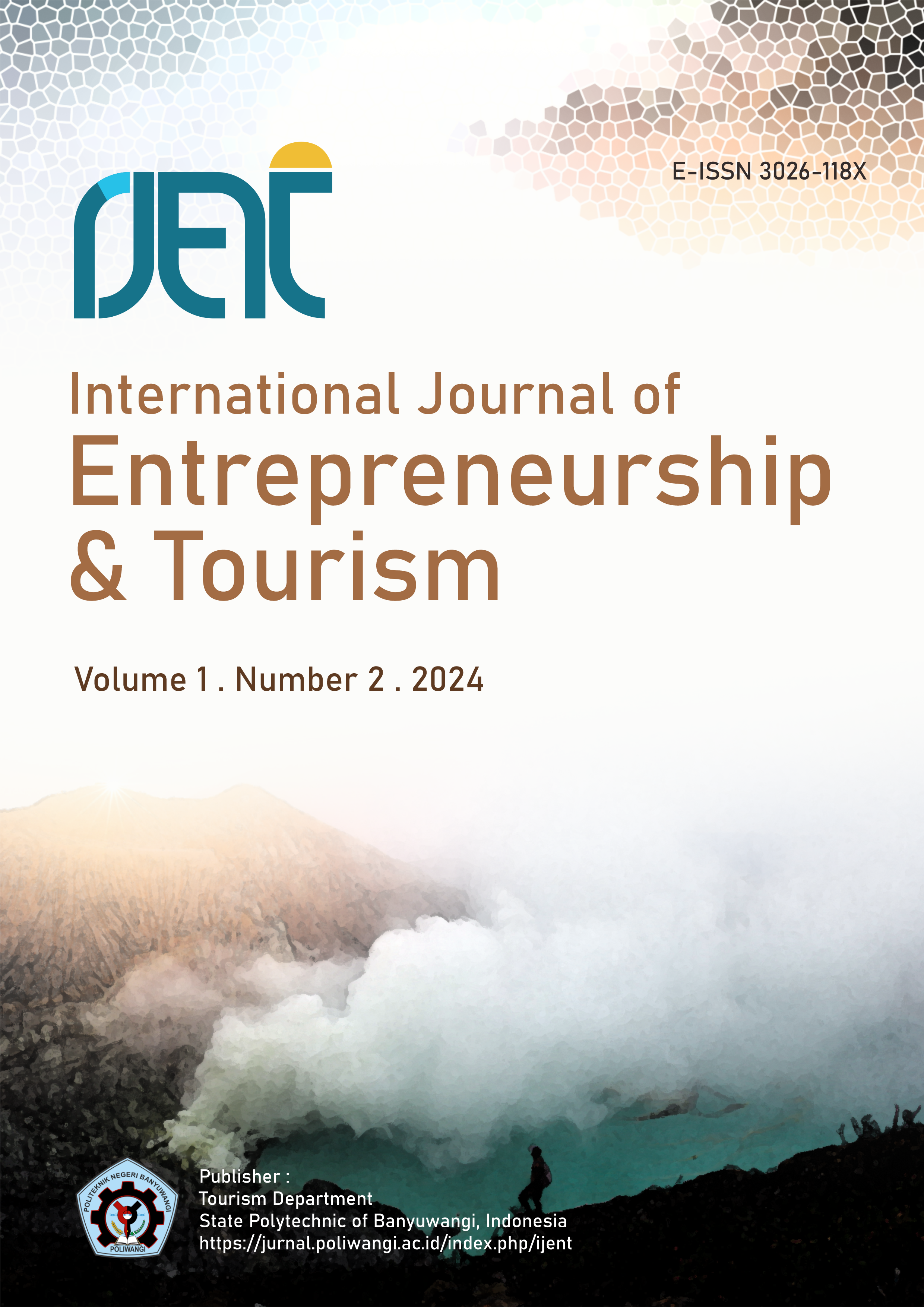Analysis Of Supply And Demand of Tourism Products in Sanur Beach
DOI:
https://doi.org/10.57203/ijent.v1i2.2024.63-75Keywords:
Components Of Tourism Products, Supply Tourism Products, Demand Tourism Products, Sanur BeachAbstract
Supply and demand are vital aspects in the development of the tourism sector. Comprehensive considerations will greatly determine the direction of the development of the tourism sector. This study aims to analyze the components of tourism products, tourism supply, and demand at Sanur Beach. Qualitative research with a descriptive qualitative approach was used in this study. The in-depth research method involved informants such as tourism managers, tourists, and other tourism practitioners at Sanur Beach. The data analysis method used was qualitative description. This study found that the provision of tourism product components, supply, and demand are categorized as good. However, it is necessary to maintain and improve their development in the future. The implication of this research is to enhance the development of supply and demand in order to improve the quality of tourism products. This study contributes to the discourse on the development of coastal tourism attractions.
References
Anonim. (2009). Undang-Undang Republik Indonesia Nomor 10 Tahun 2009. Tentang Kepariwisataan.
BPS. (2021). Denpasar Selatan Dalam Angka. Denpasar: Badan Pusat Statistik Kota Denpasar.
Bungin, B. (2001). Metodologi Penelitian Sosial: Format-format Kuantitatif dan Kualitatif. Surabaya: Airlangga University Press.
Cooper, C. (1999). Tourism: Principles & Practise. New Jersey: Longman.
Darmana, K., & Suarsana, I. N. (2016). Optimalisasi Potensi Kawasan Pantai Sanur Memasuki Pasar Bebas Global Asean Economic Community (MEA). Denpasar: Universitas Udaya.
Gilarso, T. (2003). Pengantar Ilmu Ekonomi Makro. Yogyakarta: Kanisius.
Gunn, C. A. (2000). Tourism Planning. New York: Tylor & Francis.
Gutama, I. G., & Sunarta, I. N. (2011). Evaluasi Perkembangan Wisata Bahari di Pantai Sanur. Denpasar: Prog. Pascasarjana, Universitas Udayana.
Kotler, P., & Armstrong, G. (2008). Principles of Marketing. London : Pearson Education Limited.
Paturusi, S. A. (2008). Perencanaan Kawasan Pariwisat. Denpasar: Universitas Udayana.
Pitana, I. G. (2019). Pengantar Ilmu Pariwisata. Yogyakarta: Andi & L.
Rahma, A. A. (2020). Potensi Sumber Daya Alam dalam Mengembangkan Sektor Pariwisata di Indonesia. Jurnal Nasional Pariwisata, 12(1), 1-8.
Salma, I. A., & Susilowati, I. (2004). ANALISIS PERMINTAAN OBJEK WISATA ALAM CURUG SEWU, KABUPATEN KENDAL DENGAN PENDEKATAN TRAVEL COST. Jurnal Dinamika Pembangunan (JDP), 1(2), 153-165.
Sinclair, M. T., & Stabler, M. (1997). Economics of Tourism. London: Routledge.
Sugiyono. (2016). Metode Penelitian Kuantitatif, Kualitatif, dan R&D. Bandung: Alfabeta.
Sukardika, K. (2004). Menata Bali Kedepan : Kebijakan Kultural, Pendidikan & Agama. Denpasar: Bali Media Adhikarsa.
Sukirno, S. (2005). Pengantar Teori Makro Ekonomi. Jakarta: Rajawali Press.
Wahab, S., Crampon, L. J., Gromang, F., & Rothfield, L. M. (1992). Industri Pariwisata. Jakarta: Pradnya Paramita.
Waruwu, R. S. (2022). ANALISIS DAYA TARIK WISATA TERHADAP MINAT BERKUNJUNG ULANG WISATAWAN (STUDI KASUS KAWASAN PANTAI SANUR). Jurnal Mahasiswa Pariwisata dan Bisnis, 01(09), 2395-2405. doi:10.22334/paris.v1i9
Yoeti, O. A. (2002). Perencanaan dan pengembangan pariwisata. Jakarta: Pradnya Paramita.





